Day Old Chickens

Azure Blue
Lays blue eggs
Bred for its unique blue egg shell colour, shell strength and unique plumage, the Azure Blue is a robust and friendly bird. They are ideal for small scale and back yard egg producers, producing attractive and good quality eggs. The Azure Blue will lay about 295 eggs per year. Females weigh about 4 lbs.
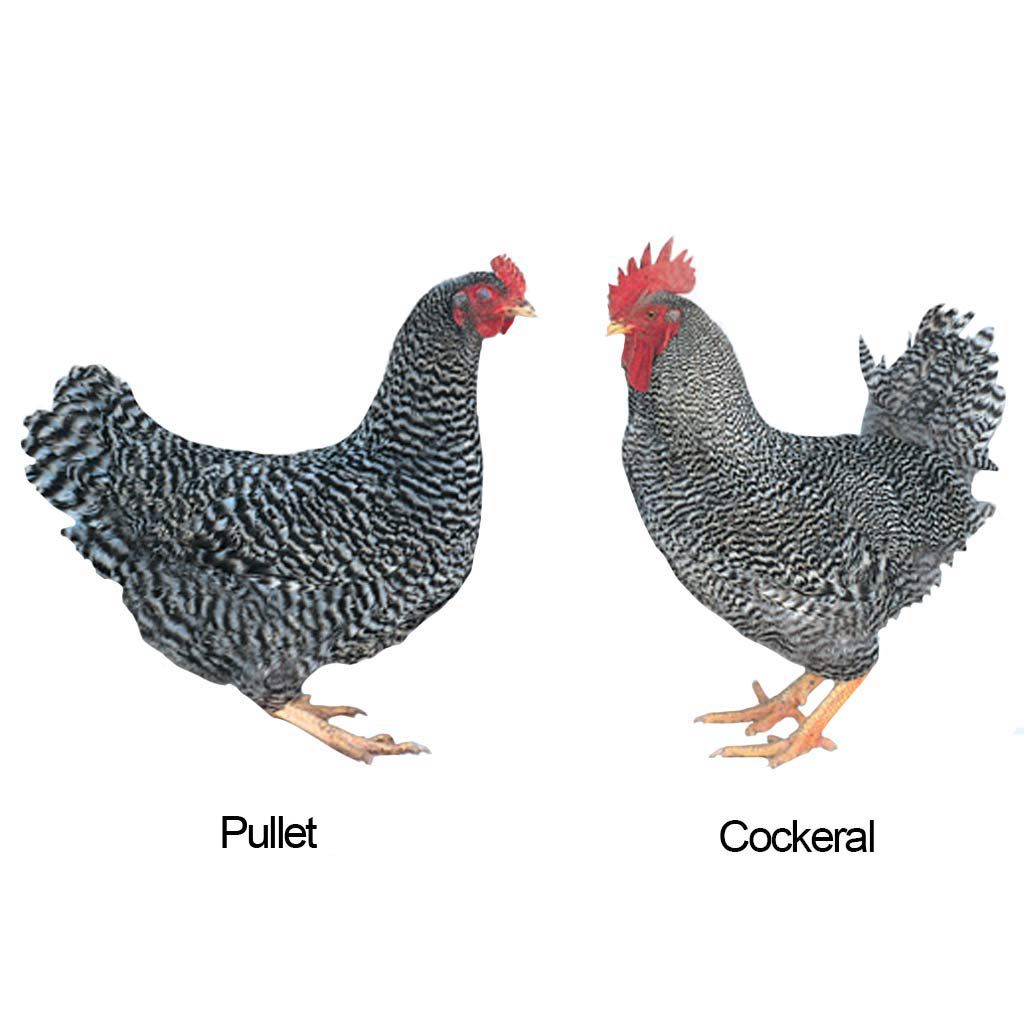
Barred Plymouth Rock
Lays brown eggs
This veteran of all the brown egg breeds is still available in quantity. For many years, they were almost extinct, as many poultry growers were carried away with the new crossbreeds. Every superior breed will prove its worth in the end, and these have made a comeback mainly because of their good meat qualities, combined with good brown egg production. People in the fly-tying business say that the Barred Plymouth Rock males carry the best “cape feathers” for that type of use. Both females and males are grey barred in colour, with the female being a bit darker. Females weigh approximately 4 lbs. at 19 weeks and 5-6 lbs. at end of lay. Males are 1-1½ lbs. heavier than females.
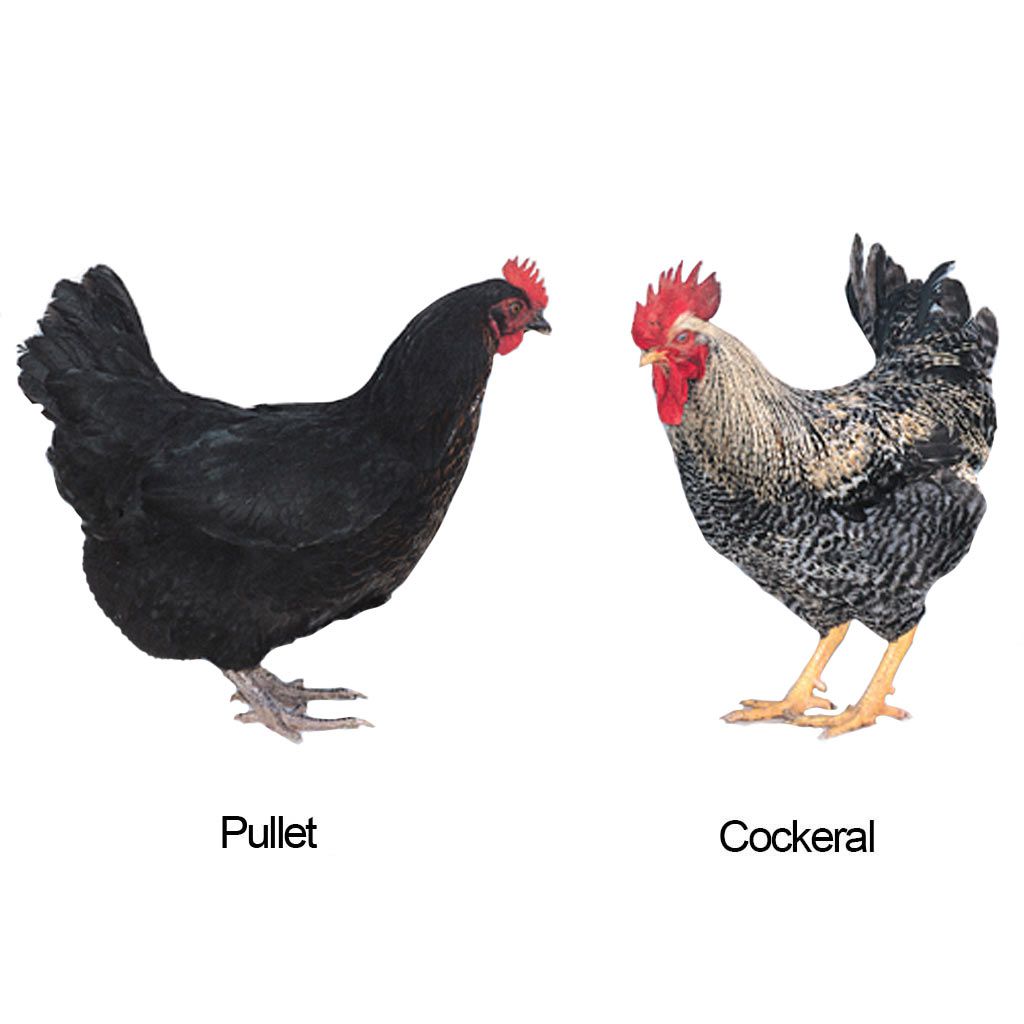
Black Sex-Link
Lays brown eggs
This layer is one of the top egg producers of large brown eggs, and performs well in all types of conditions. The females are black with a tinge of red on the neck and breast. Female live weight is approximately 4 lbs. at 19 weeks, 5 lbs. at 30 weeks, and 5½+ lbs. at end of lay. Males are a dark barred colour, similar to Barred Rocks, and weigh approximately 1½ lbs. heavier than females. This bird’s black colour tends to absorb light, so we recommend brighter or more intense lighting for top egg production.
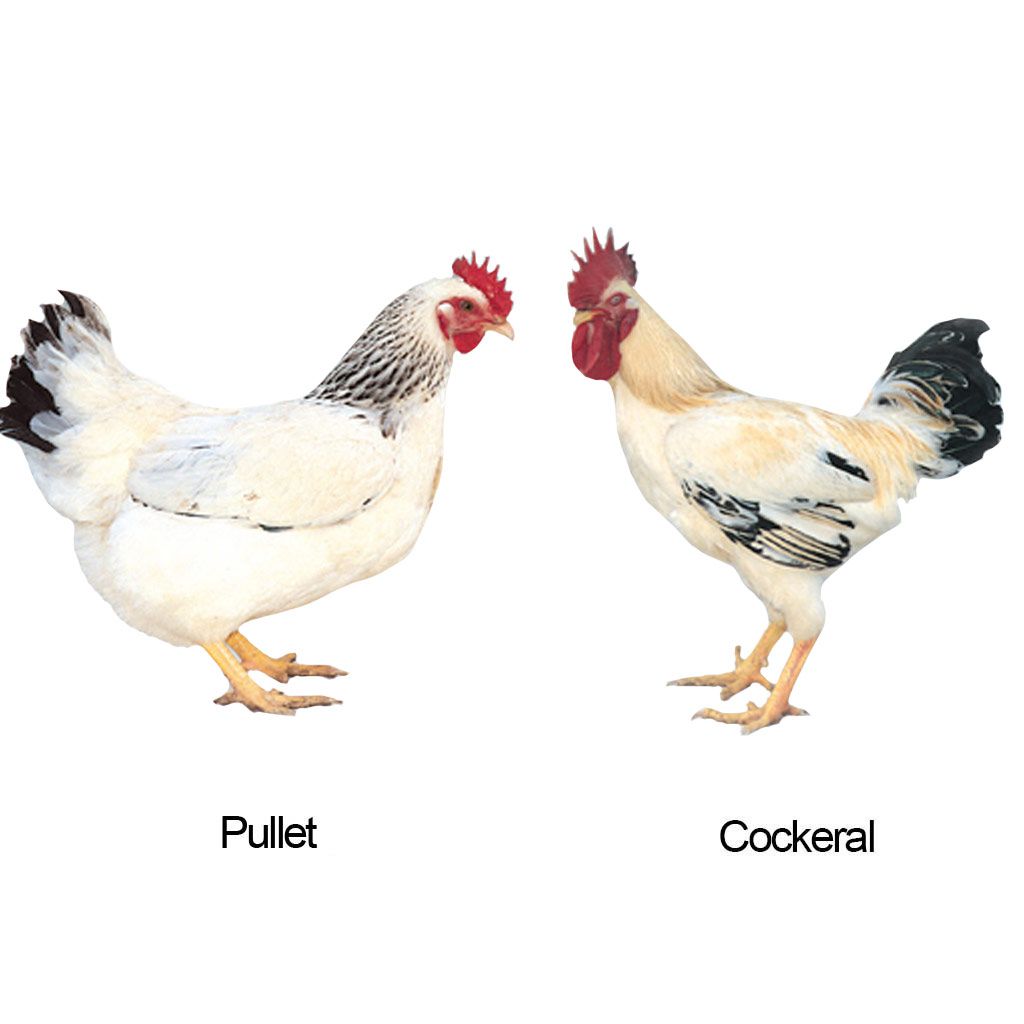
Columbian Rock X
Lays brown eggs
This proven crossbreed has been with us for over 40 years, and today bears the distinction of being one of the hardiest breeds to be found. These birds have a beautiful colour pattern. They are a good producer of quality brown eggs, a very quiet and docile bird in the laying pen, and good for the yard. Heavier than hybrids, live weight will be approximately 4 lbs. at 19 weeks and close to 6 lbs. at end of lay for females. Males are approximately 1½ lbs. heavier.
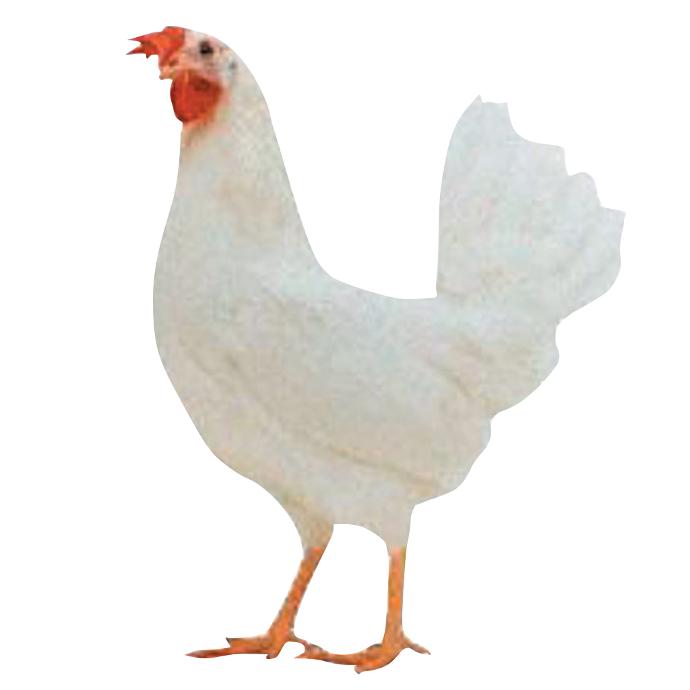
White Leghorn
Lays white eggs
For customers who want white eggs, Leghorns will peak at 90%+ production and lay approximately 300+ eggs over a 12-month period. They will do this with a minimum of feed, and will weigh approximately 4 lbs. at end of lay. Leghorns are not as hardy and are more nervous and flighty than brown egg breeds.
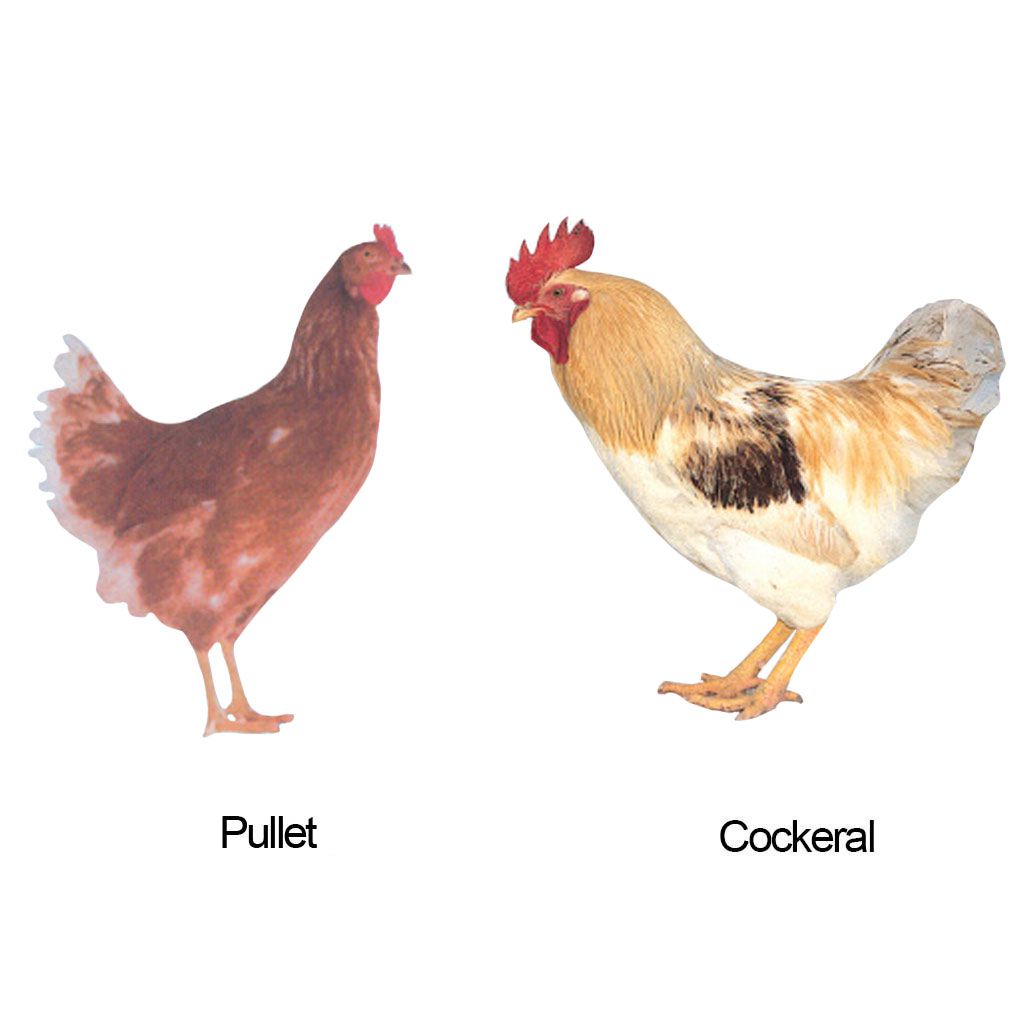
Red Sex-Link
Lays brown eggs
The Red Sex-Link is a top performing brown/red hybrid. Of all our brown egg layers, this is the lightest (about 3½ lbs. at 18 weeks and about 4½ to 5 lbs. after a year of laying), and the best feed converter, meaning it will cost you less to feed.
Most brown egg layer pullets will consume 9-10 kgs of feed by the onset of egg production. The Red Sex-Link will consume 7-8 kgs depending on when they start laying.
Egg production at 72 weeks can reach 305 to 315 eggs. Red Sex-Link birds have done well in large free-range trials in the U.K. Females are reddish-brown in colour with white underfeathers. Males are mostly white and some may have a few brown markings on the feathers.
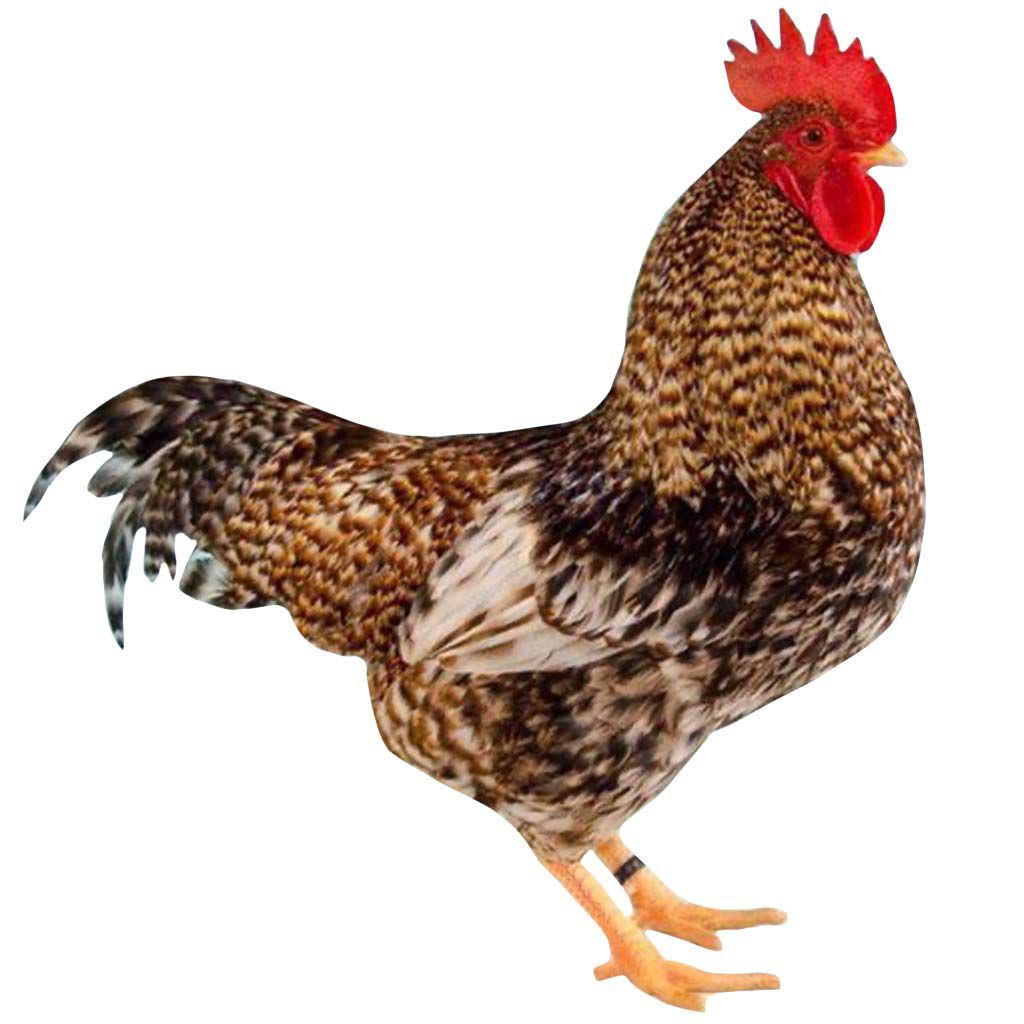
Rhodebar
Lays brown eggs
Rhodebars are red with white barring which tends to be subtle in females but on full display in the males and there may be some black markings. These chicks are autosexable which means that they can be sexed at dayold.
Females weigh approximately 4 lbs. at 19 weeks and 5-6 lbs. at end of lay. Males are 1-1½ lbs. heavier than females.
The Rhodebar will lay approximately 250 eggs per year.
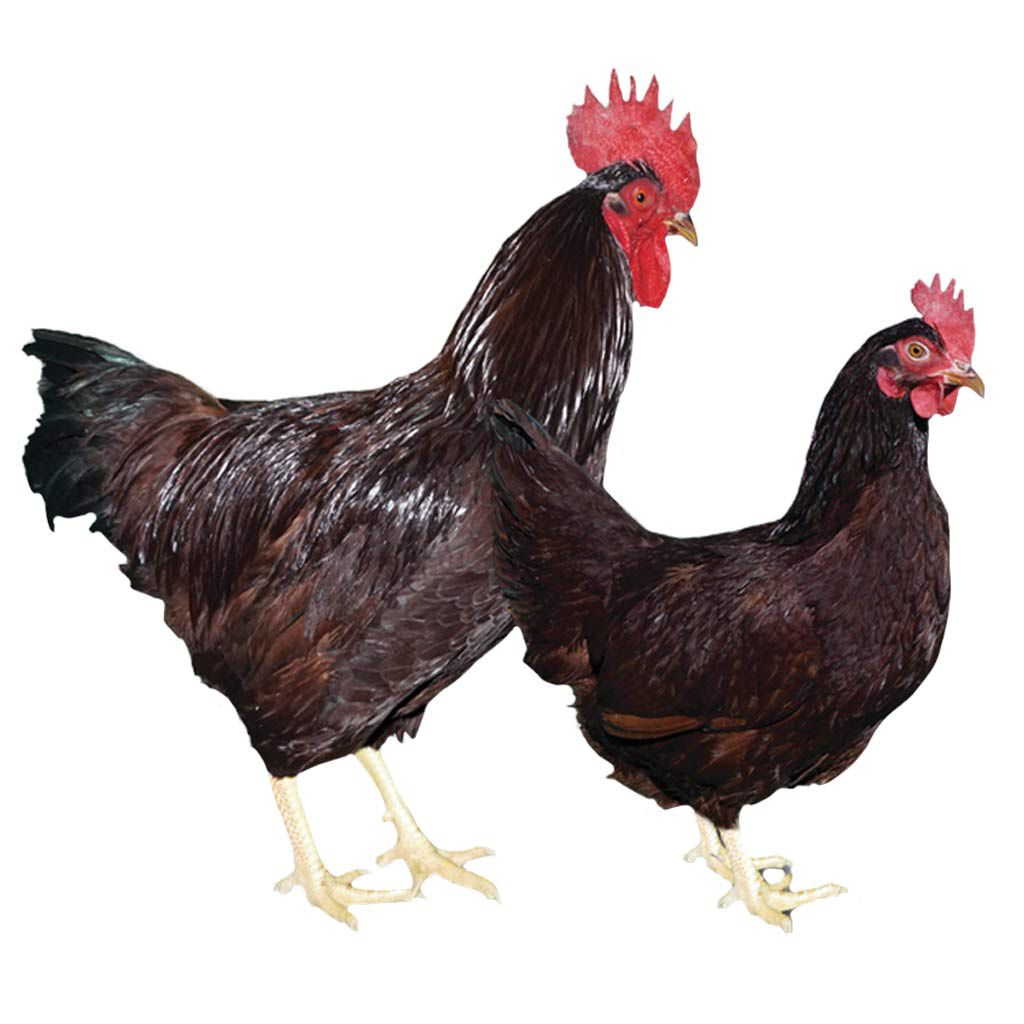
Rhode Island Red
Lays brown eggs
This popular breed is used in most crossbred varieties available today. Its bloodlines flow in most brown egg breeds throughout the world. Rhode Island Reds are a good producer of large brown eggs, and are quiet and easy to handle. Both male and female are dark red/brown in colour. Live weights are comparable to other dual purpose breeds.
NOTE: Barred Plymouth Rocks and Rhode Island Reds are more difficult to sex at day old, so only 90% accuracy is guaranteed on sexing (no sexing guarantees on orders under 30). If no males are desired, we suggest selecting other breeds
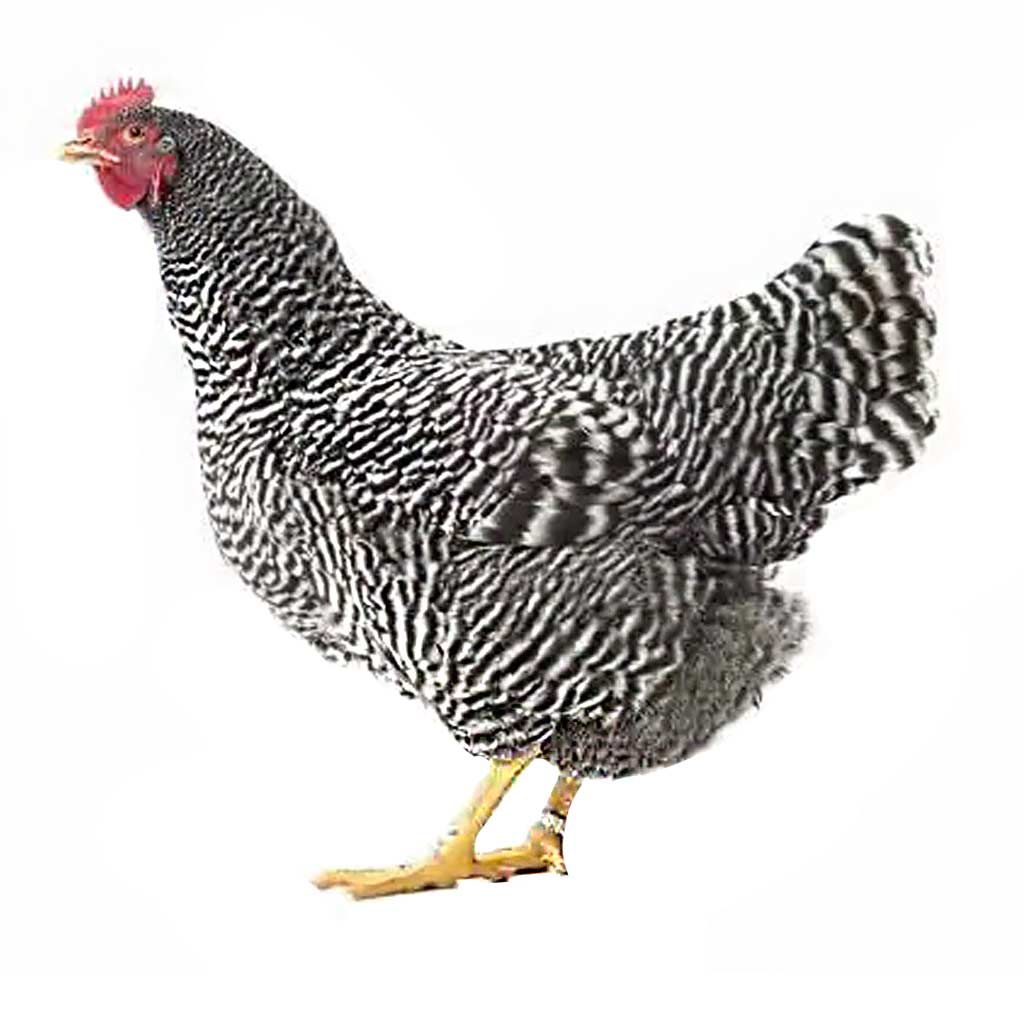
Sasso Dual Purpose Breed Irona
Lays brown eggs
This bird gets its name for strong livability and good weight gain. The SASSO Irona is the heaviest of these four breeds and presents dark grey feathers. The female average bodyweight is 3.640 kg at 75 weeks and male average bodyweight is 2.564 kg at 12 weeks. This bird delivers excellent meat quality as well as produces feather-sexable chicks. In addition to its weight advantages, the Irona also lays 286 large, light brown eggs at 75 weeks, making it a great option for dual-purpose production. This coloured layer is highly adaptable and easy to manage in all production systems.
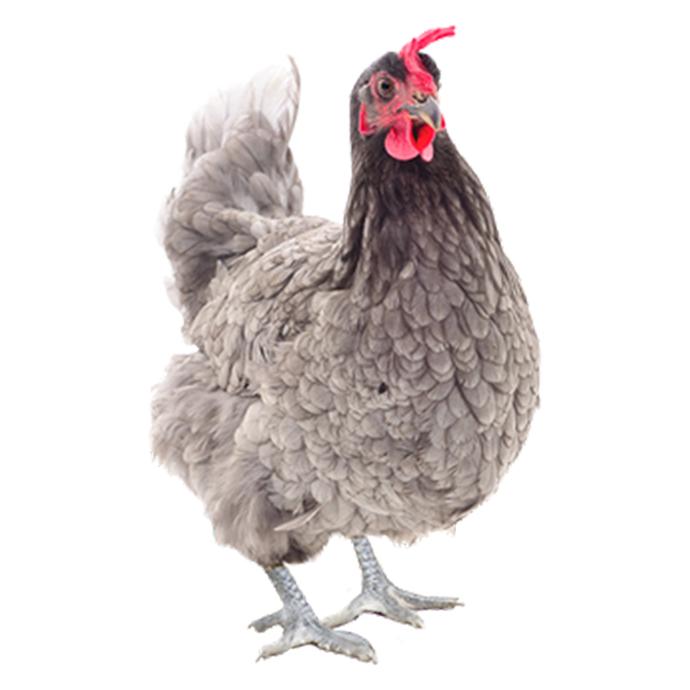
Sasso Dual Purpose Breed Silver
This silver-feathered bird is a well-balanced performer for either egg or meat production. It lays a high number of eggs and delivers excellent carcass yield after slaughter. The SASSO Silver is also notable for its beautiful, ash grey feathering, which makes her particularly is appreciated by the domestic or backyard chicken market. Its flexibility and unique characteristics offer great value for you and your operations. Autosexing can be completed with the Silver as it produces feather-sexable day-old chicks. The Silver layer is able to thrive in different production environments with minimal management.
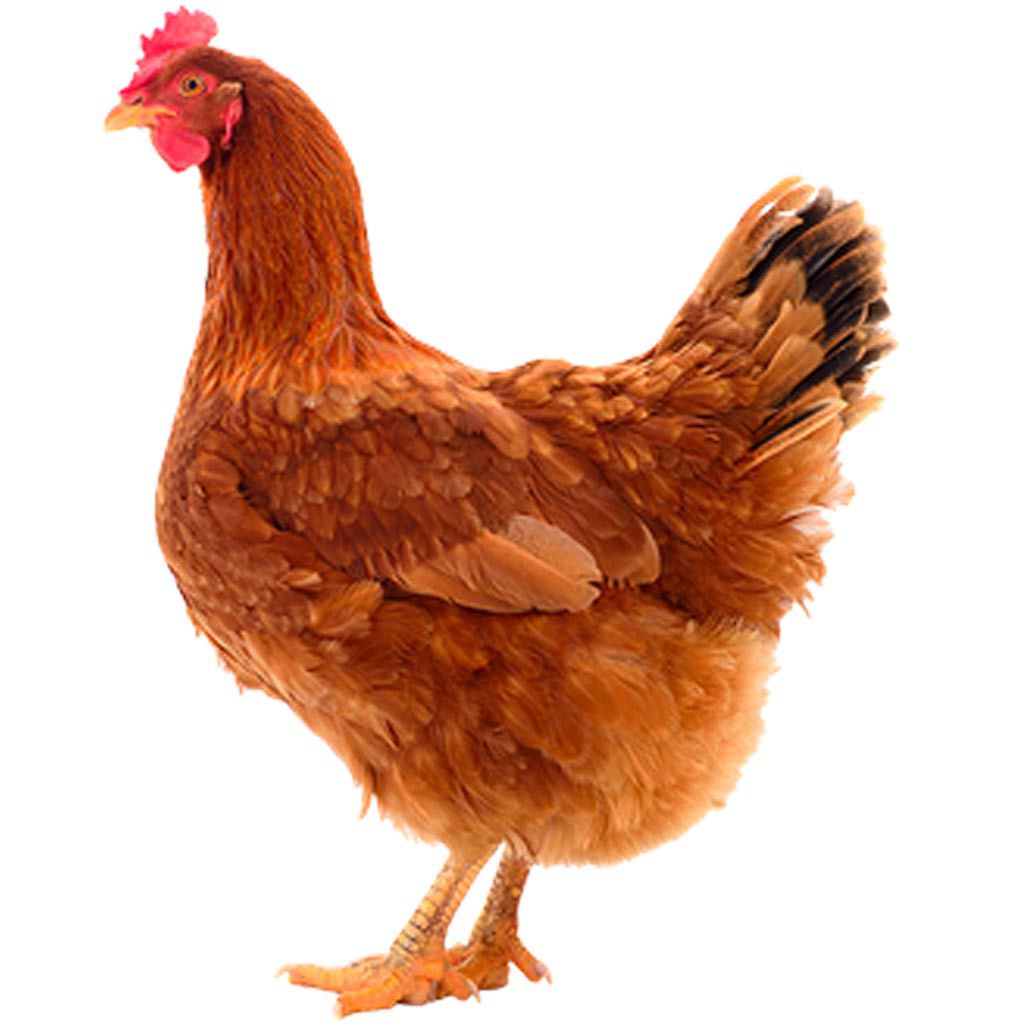
Sasso Dual Purpose Breed Scarlet
Lays brown eggs
The SASSO Scarlet features striking, red feathers and lays beautiful light brown eggs. By raising this rustic bird, you also benefit from good performance in both eggs and meat. The Scarlet males can be raised for the broiler market, with a bodyweight of 2.250 kg at 12 weeks, which results in excellent meat quality. Another advantage is that the feathering can be used to identify the sex of the day-old chicks. The Scarlet laying hen has been specially selected to perform and be easy to manage in more challenging environments such as free range and backyard systems. The female will lay 305 large eggs and weighs 2.934 kg at 75 weeks.
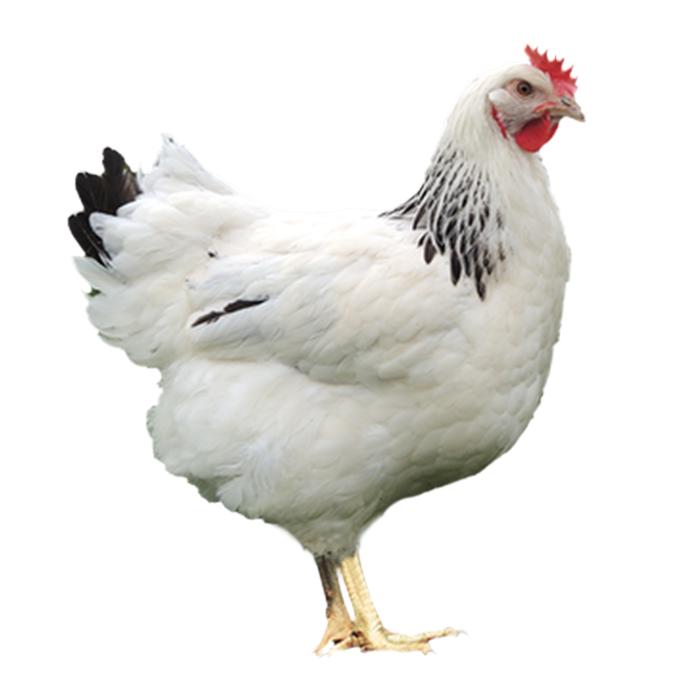
Sasso Dual Purpose Breed Ivory
The SASSO Ivory is a highly productive layer perfectly blended with traditional characteristics. It delivers the most eggs of our coloured layers with 350 large, light brown eggs at 75 weeks and weighs 2.012 kg. For added practicality, day-old chicks hatched from the Ivory are feather-sexable. If you are looking for a highly adaptable and productive layer, the Ivory may be the right fit for your operations. Males in this breed weigh 1.967 kg at 12 weeks.
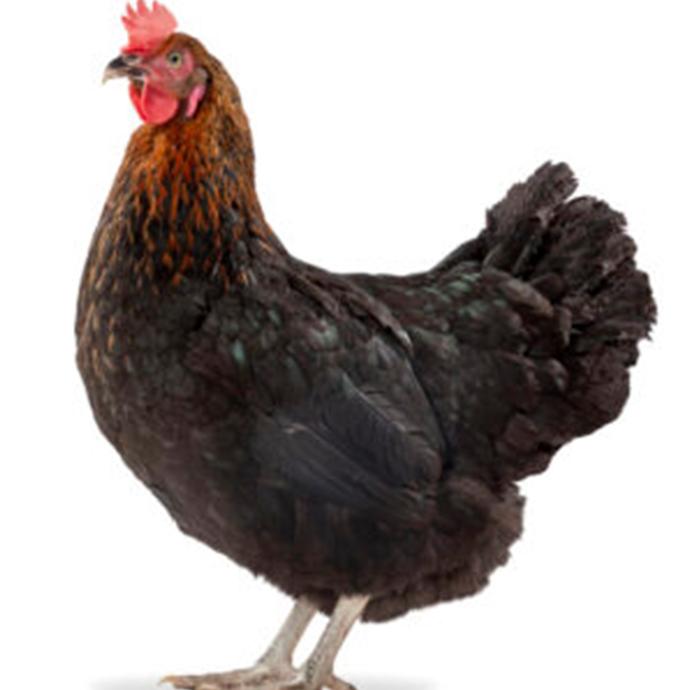
Norians
Lays dark brown eggs
The Noirans breed is linked to the history of the Marans birds. The Marans have been crossed with heavier breeds to form the Noirans. The Noirans have black copper coloured feathers and adapt well to all systems. They lay a large dark brown egg that has good internal egg quality. The Noirans will lay approximately 295 eggs a year and weigh 2.224 kg. These will be available as females in day olds only.
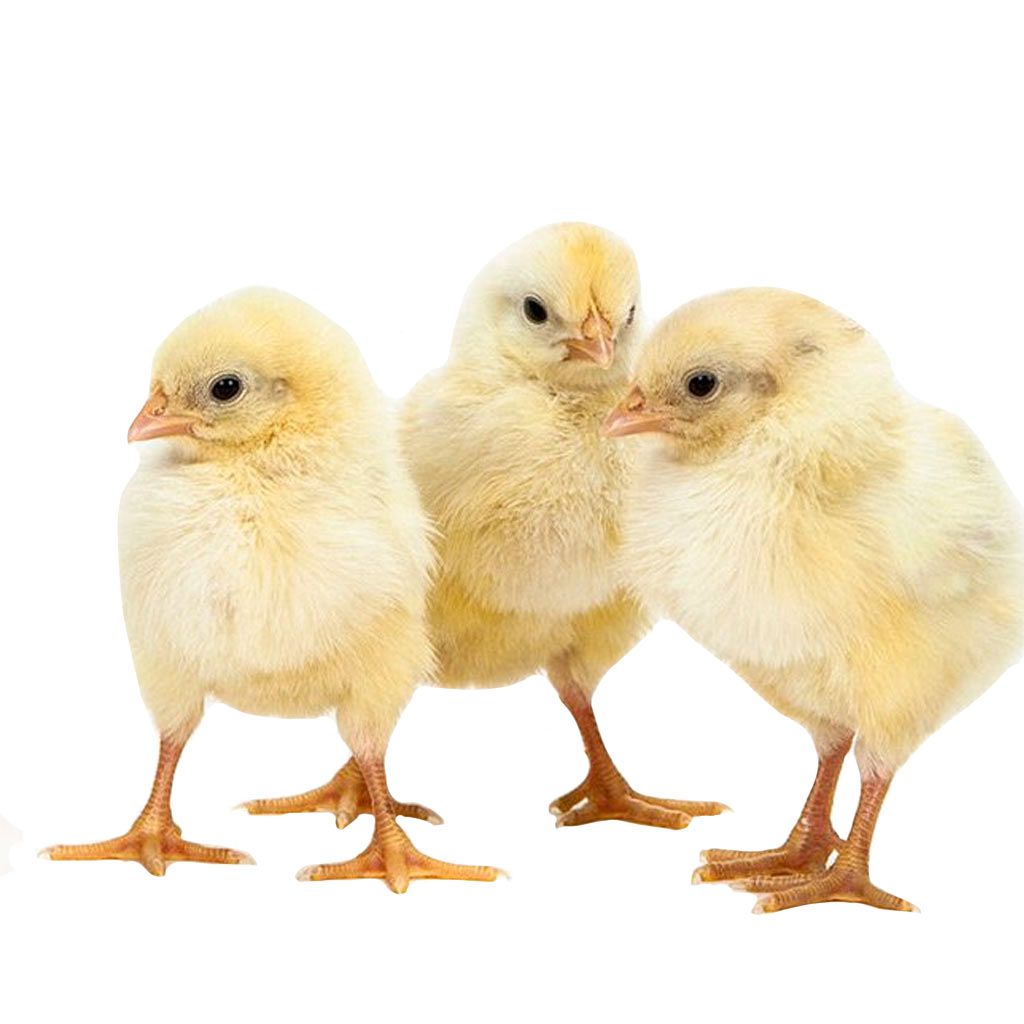
Hatch Day Choice
Frey's Choice- 1 breed of chicks.
Pullets, Cockerels & Non-sexed available.
If you want a brown egg layer but aren't fussy about the breed, Hatch Day Choice is for you. You will receive top-quality chicks at a discounted price when you allow Frey's to fill your order with whatever breed(s) they have the most of on delivery date. Normally you receive a single breed. This is a win-win deal for everyone!
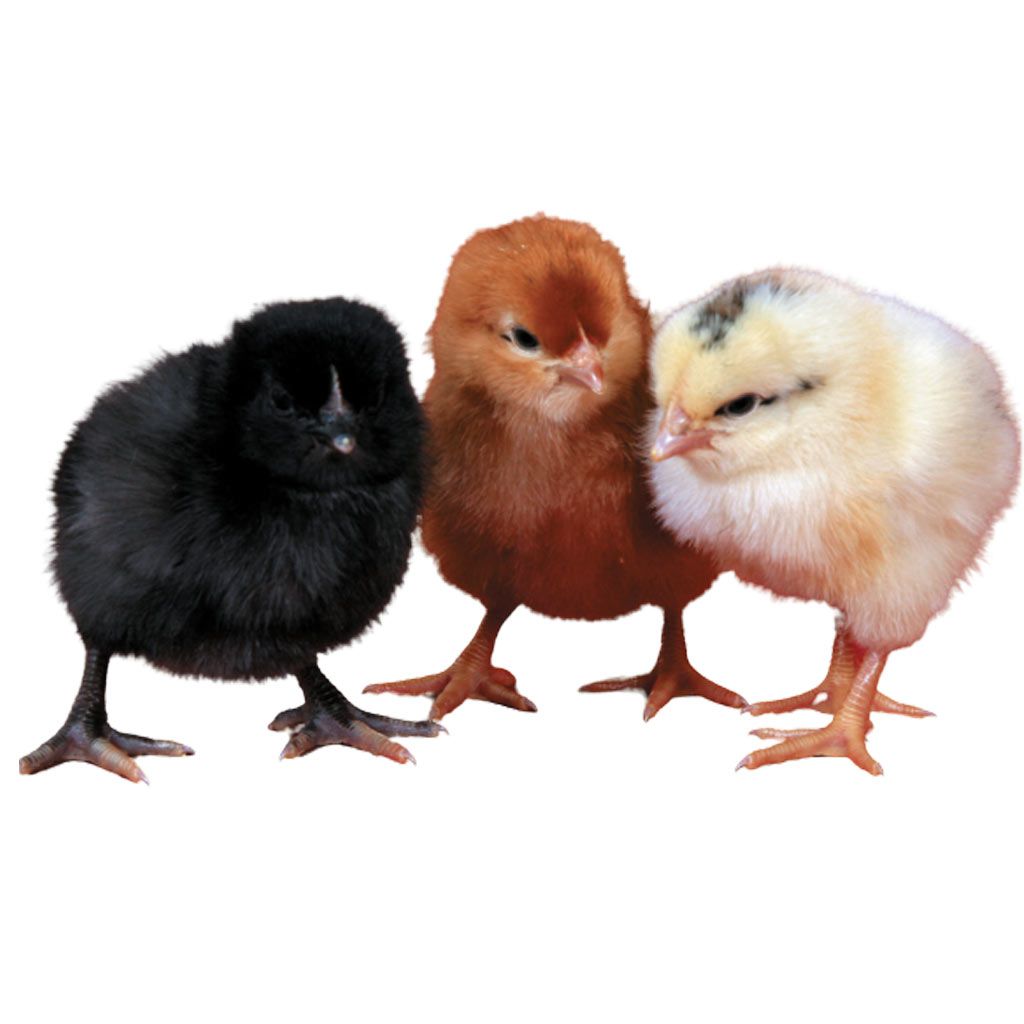
Layer Variety
Frey's Choice- 3 breeds of chicks.
Pullets, Cockerels & Non-sexed available.
Looking for colour variety in your backyard layer flock? This option will give you an attractive assortment of brown egg layers. You will receive a mix of brown, yellow and black chicks - most likely 3 different breeds. Since several of Frey's brown-egg breeds look very similar, this is a more economical option than ordering a few of each breed and paying the top price for each.
Order early to ensure that a variety of breeds are still available!
Meat Breeds
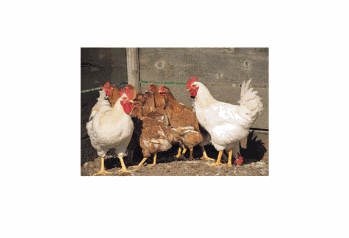
Frey's Special Dual Purpose
Slow Growth
This breed is a combination of some of the heaviest dual purpose breeds still in existence. It was developed for those who want a hardy, healthy chicken with firm and flavourful meat. Mortality is very low in this breed, and weak legs and heart attacks are almost unheard of.
The females are a rusty red in colour and are generally quiet, but they are not recommended for growers wanting high egg production. The females will grow to approximately 5-6 lbs. live weight at about 15 weeks. As females approach maturity (15–20 weeks), they tend to put on fat, so if larger-size females are desired, we suggest a diet lower in protein and energy. Females between 10-14 weeks old are a favourite of the Asian community.
The males are white and may have dark markings on their backs. Males will be 7 to 8 lbs. live weight at 15 weeks.
These birds can take up to 13 kgs of feed to reach 15 weeks old.
As males mature they can have a tendency to fight and so keeping the ratio of males to females at 1 to 10 or lower will help. If you raise only males and want to keep them to an older age you can try darkening the pen and beak trimming.
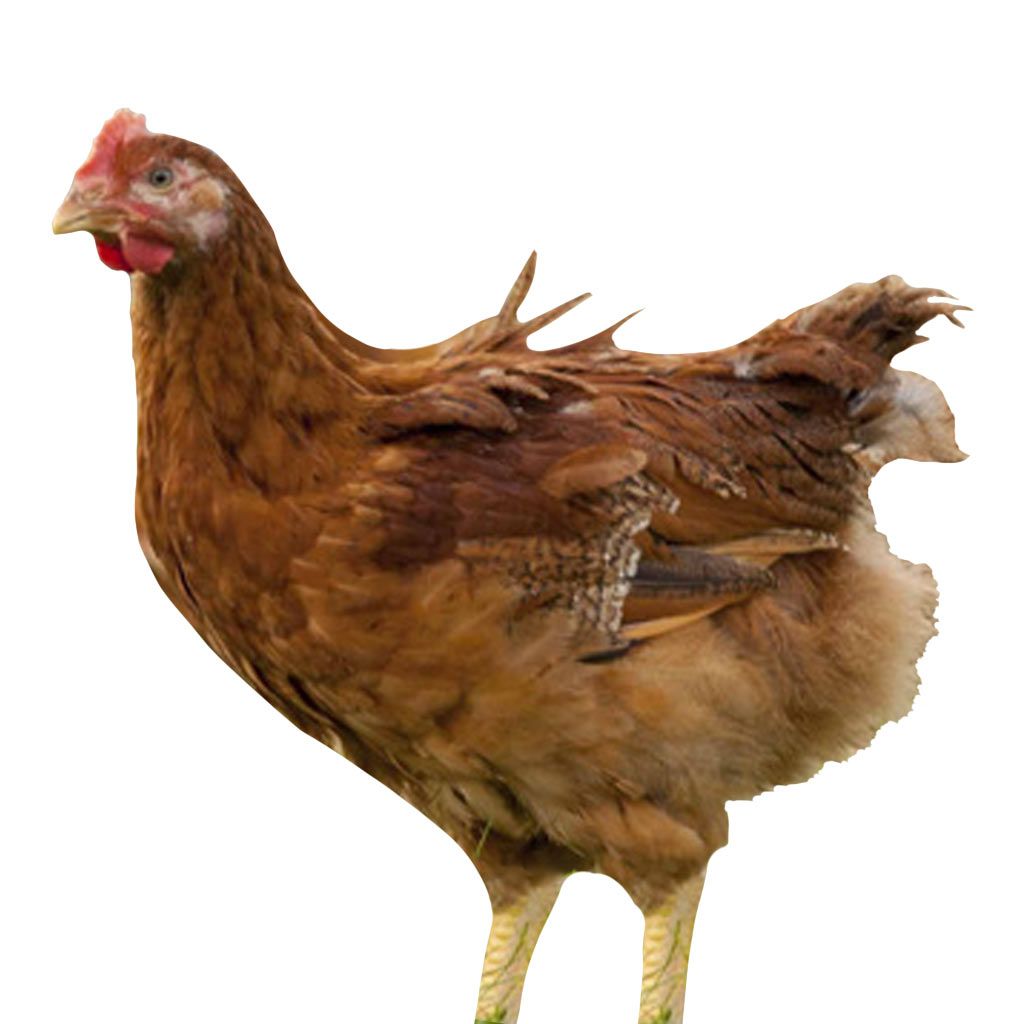
Rustic Ranger
Alternative Growth
This is our heaviest coloured broiler. The Rustic Rangers are a perfect compromise between rusticity, feed conversion rate and yield. They are a great pasture bird and excellent forager. If you are looking for a pasture bird this is the breed for you. They produce a table bird in just 12 weeks.
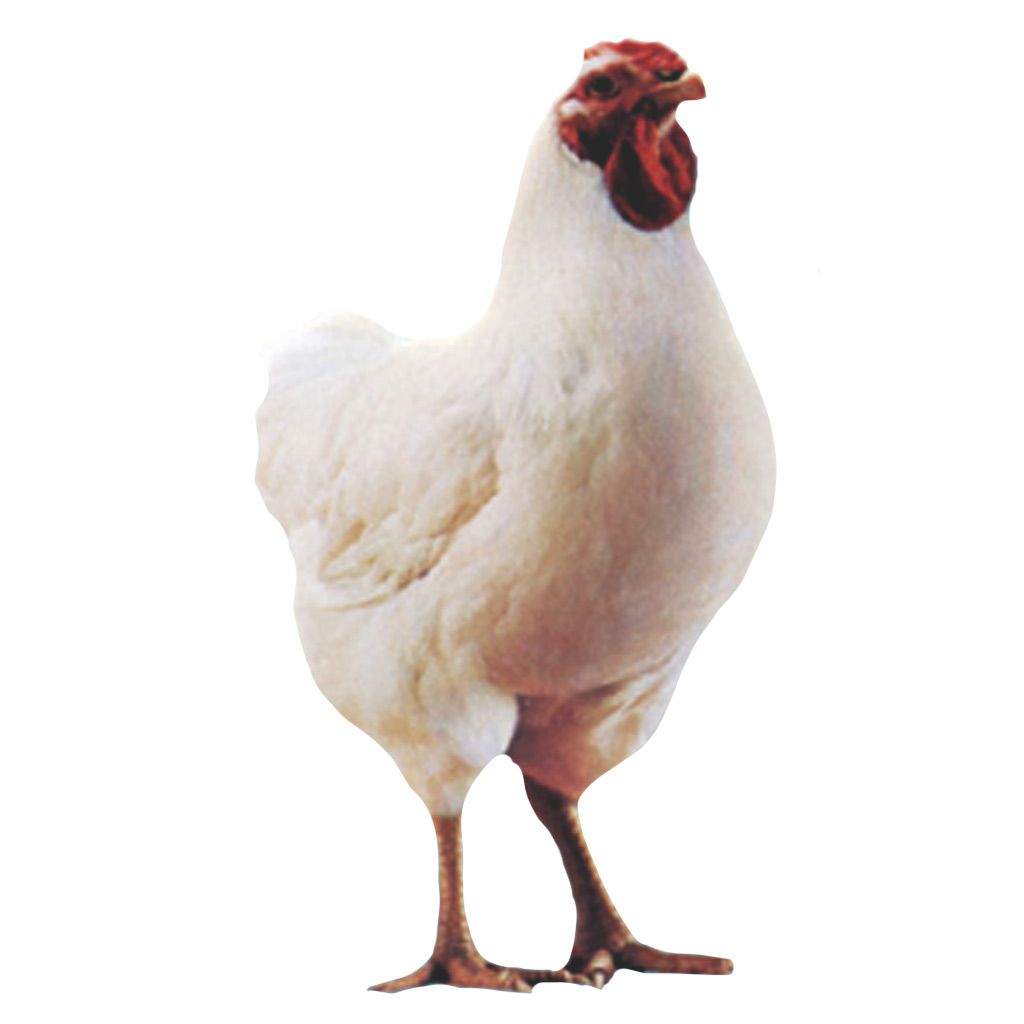
White Rock Cornish X
Fast Growth
These extra heavy meat-type birds are bred for meat only. Their strength is in their efficient conversion of feed into meat. If purchased as non-sexed, the fighting of the males is reduced. Females will substitute well for capons. Cornish Game Hens are produced by growing females of this breed to 2 lbs. live weight (approximately 4-5 weeks). White Rocks are typically grown for 8-10 weeks, more or less if larger or smaller birds are desired. We will guarantee delivery of 100% live, healthy chicks, but we cannot accept responsibility beyond that point.
Turkey, Pheasant & Duck: non-sexed
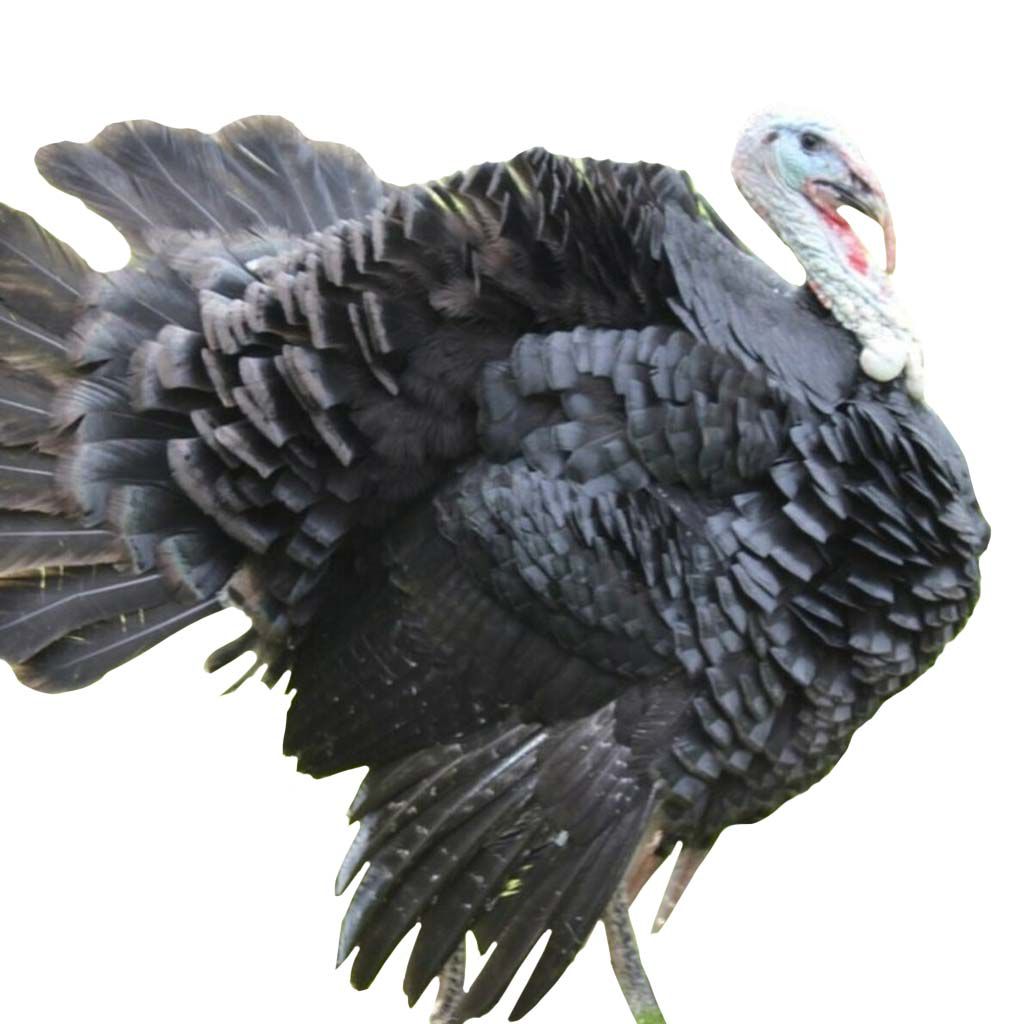
Artisan Gold Turkey
The Artisan Gold is a rare breed that is smaller in size and slow growing. It has black feathers, unique colouring in the face and feet, long black legs, and a pronounced beak. It has natural tendencies such as roaming and roosting, and offers a robust, gamey taste that is exotically different from traditional turkeys.
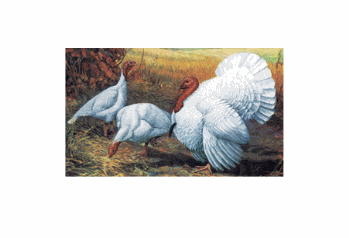
Large White Turkey
Large White Turkeys are the fastest growing and most feed efficient turkeys. They can grow to tremendous size, however keeping them for longer than 18 weeks will decrease their feed efficiency.
Turkeys are very delicate and require careful attention to all details in the first few weeks of life. Turkeys can be processed as early as 10 weeks of age. It takes approximately 2.5 lbs. of feed per pound of live weight.
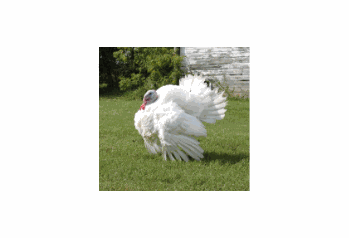
MiniCLASSIC Turkey
The MiniCLASSIC may be small in stature, but big in everything that counts. This special bird has been bred to develop and mature like natural bred turkeys of the past, and this little meatball is sure to impress.
For the farmer, this means that the Toms don’t grow as big and can be harvested more efficiently.
This bird can be harvested early without sacrificing meat quantity or quality.
It is a perfect complement to any specialized or free-range operation, and thrives under those conditions. For the consumer who wants a small, organic, locally-grown bird for a special occassion, they won’t find anything that compares to the MiniCLASSIC.
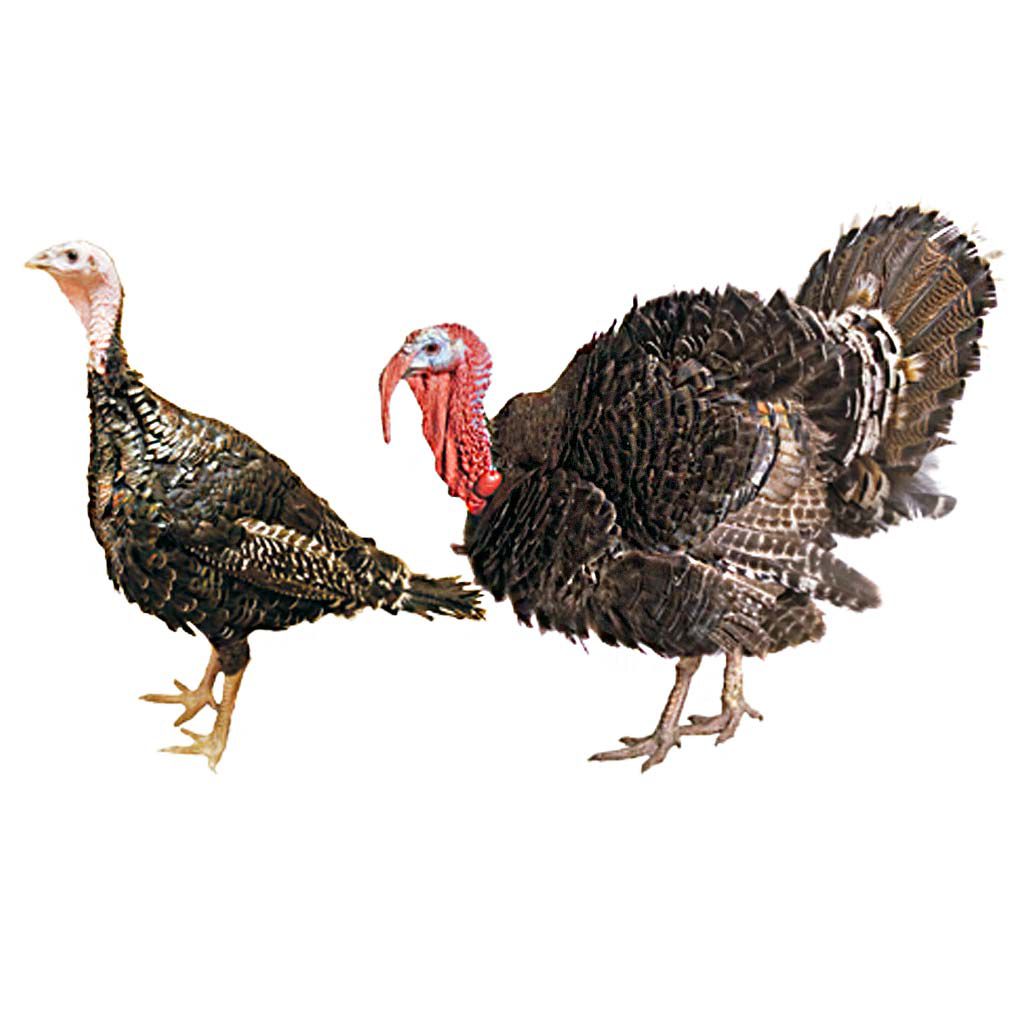
Orlopp Bronze Turkey
This premium broad-breasted turkey has excellent conformation, high meat quality, natural fat layering, and beautiful feathering. Weights and feed conversion will rival traditional Large White turkeys.
These were weights achieved on a trial – actual weights will vary with environment, health and feeding programs.
For more information go to orloppbronze.com
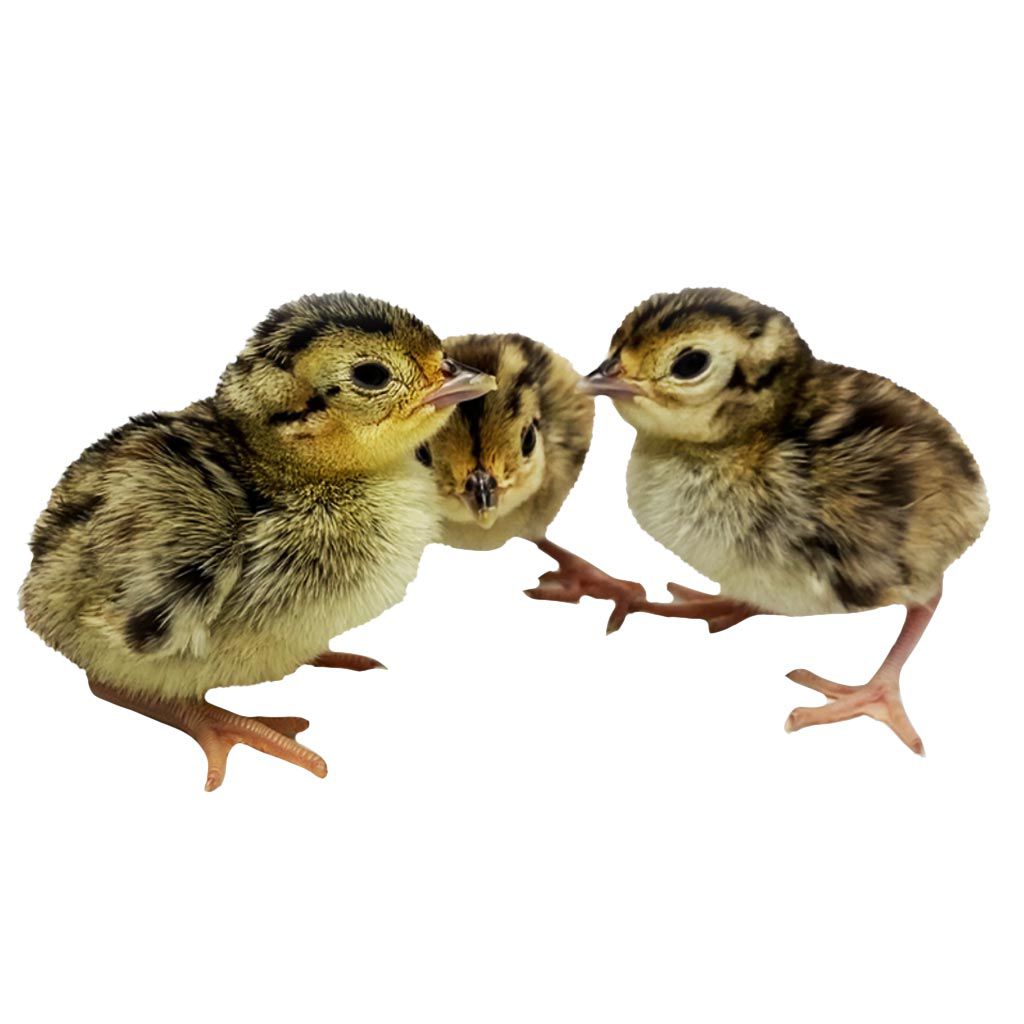
Ringneck Pheasant
The ringneck pheasant was first introduced to North America from China in 1881. It is perhaps the most well-known game bird in the world.
The male has a dark head, distinct white ring around the neck, dark red breast feathers, and varying colourful patterns on the wings, back and tail. The female is a light brown with varied darker patterns on the whole of her body.
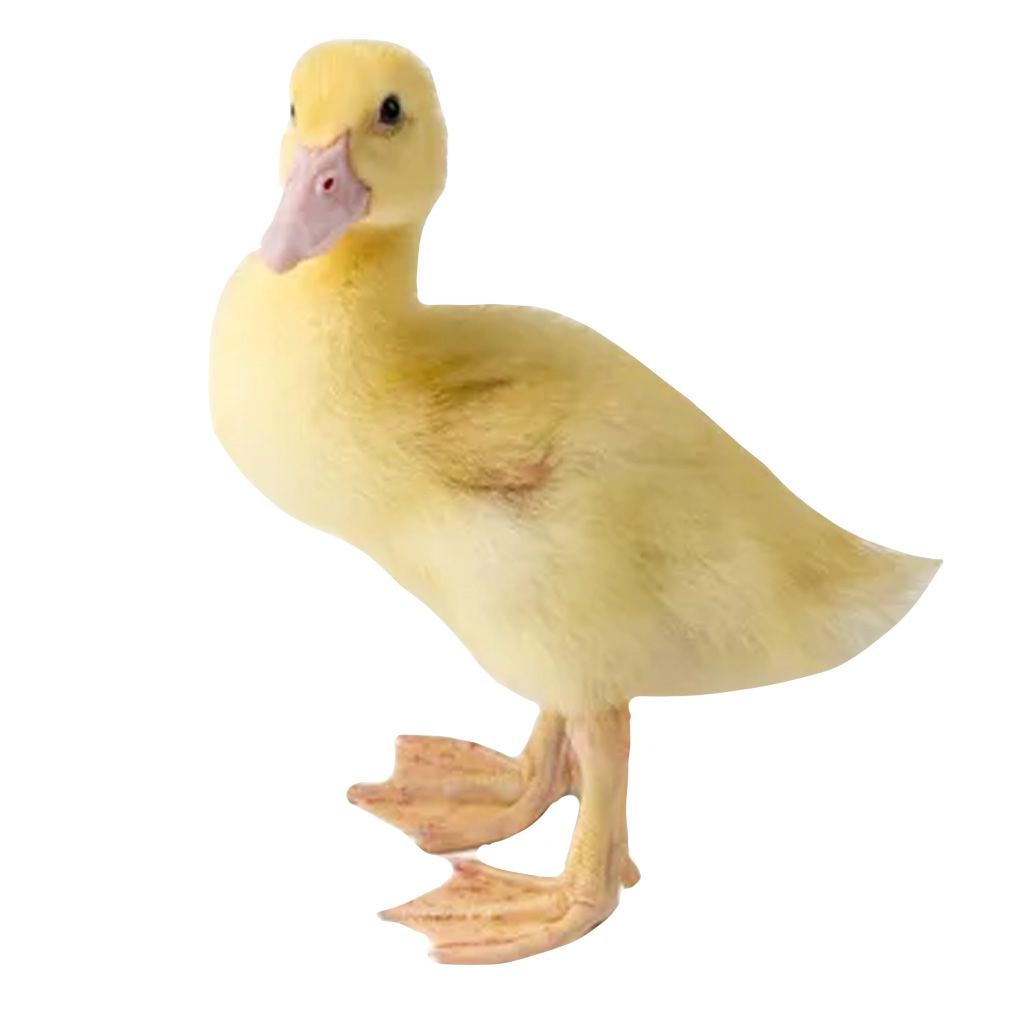
White Muscovy Duck
The South American Incas, so it’s said, domesticated these quackless red-carnucled ducks centuries ago. Introduced to other parts of the world by European explorers in their travels, grain-fed Muscovy duck has been widely renowned for its distinctive flavour, firm flesh, and high yield after cooking – Muscovies have more breast meat, smaller bones, and less fat than other ducks. The drakes are about twice as large as the females, so the grower has the right-sized bird to suit almost everyone.
To enhance the natural advantages of the Muscovy, there has been a lot of genetic research and selection done in France. As a result, strides have been made in increasing feed efficiency and improving growth rates. The new hybrid Muscovy ducklings look like the original Muscovy, but they eat somewhat more per bird per day, and grow more rapidly. For the traditional roasting duck with that fine “ducky” flavour, you need to raise them at least 14 weeks. The feed efficiency will drop as the birds get older and heavier, but the improved meat quality and better dressing percentage will make it worthwhile.
Young Muscovy ducklings are sometimes cannibalistic when they are getting their feathers, particularly when the quills are poking through the wings and tail.
Fun Fact: In Canada, Muscovies have earned a reputation in an area entirely unrelated to their food production value – as economical, environmentally friendly additions to fly control regimes in other livestock productions. For more information, you may contact the Department of Environmental Biology, University of Guelph, Guelph, Ontario, N1G 2W1.
Please note that chick demand is high, we have a list of sold-out delivery dates that updates weekly on our delivery schedule page.